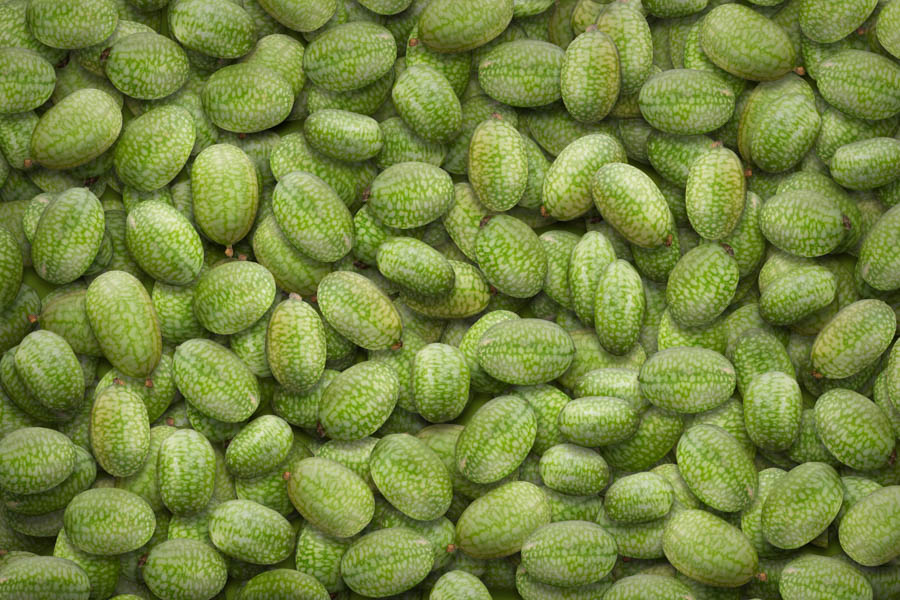Cucamelons: Planting, Maintaining, Harvesting and Use

GardenZeus earns commissions on sales made through links in this article. There is no additional cost to you.
Cucamelons, Melothria scabra, also known as Mouse Melons or Mexican Sour Gherkins, are grown as warm season annuals for their grape-sized fruits that look like small watermelons. Cucamelons are easy to grow, an excellent choice for containers, and an ideal choice for growing with children. Most describe cucamelons as tasting like a cucumber with a touch of lime. Leave the skin on and eat raw. Or even better, pickle or use in a chutney.
Despite the melon in the name, cucamelons are grown like small cucumbers. Cucumelons are a warm-season crop; they are harmed or killed by frost and grow and produce best at daytime temperatures of about 65° to about 75°F, with growth and fruiting diminished at temperatures above 85°F. Time your plantings to coincide with cool-but-not-cold weather, and provide protection from both heat and cold. In some areas, such as Southern California’s inland valleys during spring, you may have to protect them from both daytime heat and nighttime cold to maximize yields.
Cucumelons perform best in full sun and rich, loose, fertile, well-drained soil that is consistently moist but not wet.
Install trellises or bamboo pole supports before planting seeds. Cucamelon plants are known to produce vines as long as 10 feet. Generally the longer you wait to install support after planting cucumelons, the more awkward and unworkable it may become.
Plant seeds, not seedlings. Most cucurbits are sensitive to any root disturbance, such as from transplanting. Cucamelons should generally be seeded directly outdoors, when daytime temperatures are at least 65°F and frost risk is low. Seeds may be slow to germinate or rot before germinating at temperatures below 65° F, and germinate best at nighttime temperatures above 55°F.
Plant cucumelon seeds at a depth of about 1/2-to-1 inch in moist or pre-irrigated soil. As a general rule, wait to water germinating cucamelon seeds again until the soil surface is dry down to about 1/8 to 1/4 inch.
Gardeners who must plant seeds before the chance of frost has passed should consider using biodegradable pots: plant cucamelon seeds in the soil as described above and then place the entire pot in the soil once the risk of frost has passed.
Maintain consistent soil moisture while keeping cucumber leaves entirely dry. Avoid watering with sprinklers. Prevent wilting. Cucamelons generally require less water than cucumbers.
Provide sufficient nitrogen throughout the growing and harvest periods. Cucumelons need additional nitrogen to grow quickly and yield abundantly.
Cucamelons are ripe when the size of a large grape, or about 1 inch long. Harvest ripe cucamelons regularly as they can self-seed: harvesting regularly and picking up any dropped fruit will prevent unwanted cucamelon plants from emerging the following season.
GardenZeus has customized growing information by plant, including cucumber, and zip code. To get started, enter your zip code here.
Other articles of interest:
Growing Cucumbers in the California Home Garden
The GardenZeus Guide to Watering Cucumbers, Melons and Squash (Cucurbits)
